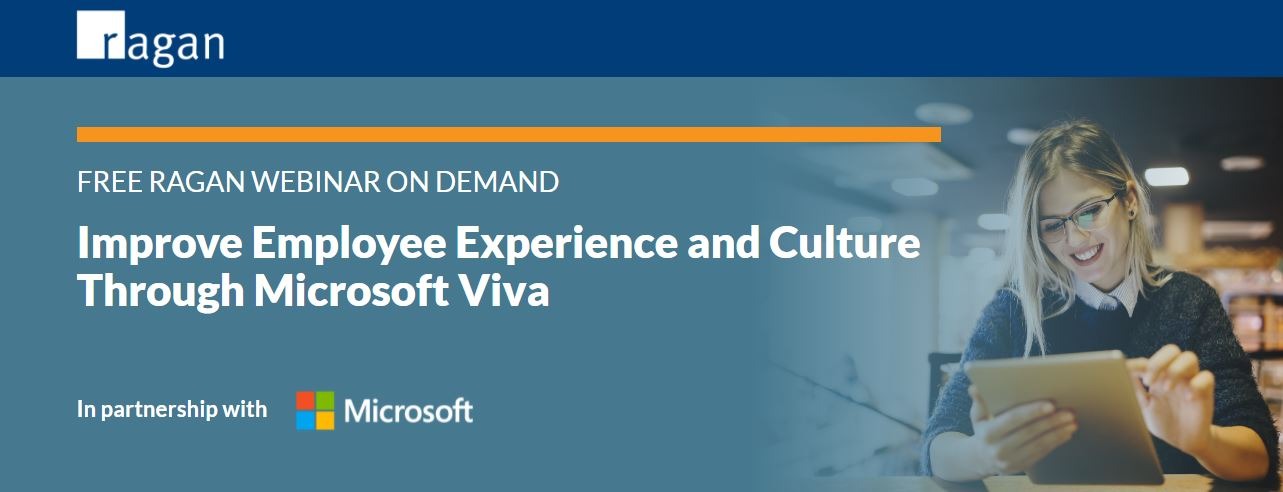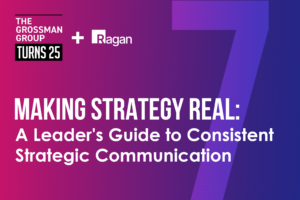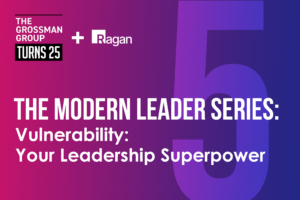Improving employee experience and culture through Microsoft Viva
Kick the tires on the software giant’s new all-inclusive intranet solution.

Microsoft’s mission is to “empower every person and every organization on the planet to achieve more.”
That’s the impetus behind Viva, the company’s new corporate knowledge hub and intranet software.
According to Michael Holste, a senior product marketing manager for Microsoft, Viva is “an employee experience platform that empowers people and teams to be their best from wherever they work.” Holster shared a sneak peek of Viva’s bells and whistles at a recent Ragan webinar titled, “Improve employee experience and culture through Microsoft Viva.” Here’s how Viva can “bring together communications, knowledge, learning, resources and insights into an integrated employee experience.”

Pursuing sustainable productivity—and well-being
Holste says most employees (and companies) are operating at an unsustainable pace right now. Widespread remote work has certainly been a boon in many regards, but it’s also decimated boundaries work/life boundaries that used to be clear-cut. “We cannot keep pushing the gas of productivity, we need to make it more sustainable,” Holste says. He adds: “As organizations have transformed to survive, we must go beyond scrambling. Burnout is rampant, and work/life balance has been smashed.”
The connection between workers and employers is changing, too. He says companies eager to retain an edge in recruiting, engaging and retaining top talent should go beyond the old-fashioned impersonal, transactional relationship with workers—and help employees pursue personal success and well-being. “Companies must use technology to help people find a healthier balance and be more resilient amid all this profound change we’re experiencing,” he says.
What’s at stake, exactly? Nothing less than your company’s bottom line. As Holste notes, “higher engaged employees who feel part of the mission are happier, stay longer and lead to profitability.”
How Viva can help
Holste says the key elements of employee experience (EX) are well-being, empowerment, growth, purpose, focus, and connection. Viva is designed to nurture these crucial EX concerns through its four modules:
- Connections. This dashboard section enables you to add customized, personalized communications such as announcements, news, events and templates that pertain to you—or can be tailored toward frontline workers, for instance. Here you can also post company resources related to pay, benefits, IT, and compliance. You can add your own color scheme and logos and change the URL to your liking.
- Insights. Viva offers turnkey analytics so you can monitor your own stats, and it offers anonymized, aggregate data for managers and leaders to mine. This module also features tools that enable you to conduct surveys, gather and share feedback, and capture sentiment. As Microsoft wrote in a blog post, “Viva Insights can help a manager see if their team is at risk of burnout and provide recommendations like encouraging your team to turn off notifications, set boundaries in their calendar, and set daily priorities to focus on what matters most.”
- Learning. This section, which integrates with MS Teams, uses AI to aggregate content from LinkedIn Learning and other top educational sites (or your own content) to help employees pursue professional and personal development. You can curate your own content and playlists, and mangers can track employees’ coursework progress. This module helps “make learning a natural part of workers’ days,” Holste says.
- Topics. Microsoft likens this module to Wikipedia, in that it “uses AI to automatically organize companywide content and expertise into relevant categories like ‘projects,’ ‘products,’ ‘processes,’ and ‘customers.'” This section provides “suggested topics” based on the user’s interests and preferences.
Building a business case for Viva?
If you’re keen to quantify the impact of work on people and bottom-line business, Viva could be a good fit for your org. You’ll gain data-driven, privacy-protected visibility into how work patterns affect well-being productivity and results. Holste says Viva can also help companies:
- Turn content into usable knowledge. “You can use AI to reason over your org’s content and automatically identify, process and organize it into easily accessible knowledge,” Holste says.
- Increase connectivity, collaboration and personal growth. Having a one-stop shop for all personalized, targeted employee info can be a boon for engagement. You can encourage meaningful two-way connections across the company by enabling employees to easily discover relevant comms and communities.
- Make it easy for people to contribute. Foster a culture of inclusion by empowering every employee to contribute ideas and share feedback.
- Unite and inspire your org. Align the entire company around your vision, mission and strategic priorities.
- Drive results that matter. Viva can help you “promote development that drives and ties to meaningful business results,” Holste says.
Wellness and personalizations are key considerations, here. Viva offers a “Protected Time” feature for focused work, and you can wrap up a workday with a “Virtual Commute” in Microsoft Teams to provide structure and time to wind down in a mindful way.
If you’re concerned about the tech side, don’t fret. Holste says the software integration is “not a heavy lift.” “If you’re using Sharepoint, Yammer or Teams, you’re almost there,” he says.
Last but not least, Holste touts Viva as an invaluable onboarding tool. He suggests creating a “new employee community” so new workers see all relevant content in their dashboard, such as benefits info, device support and employee handbooks. You can also set up new employee course of content to get them up to speed—and on their way toward powering your company’s future.







